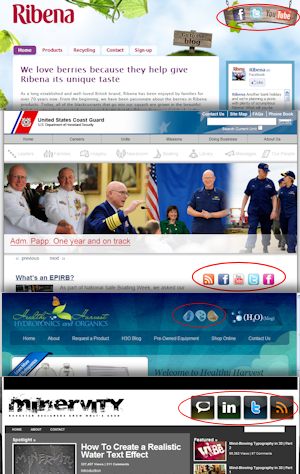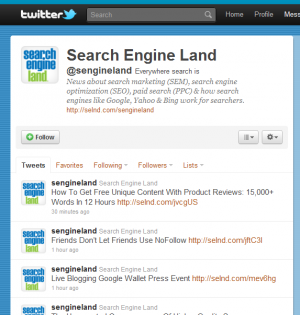How Mark Zuckerberg Stole Your Search Traffic & What To Do About It
Hint: You gave it to him. It’s a familiar story: businesses finally getting their search optimization stratgy down, putting in SEO the hours, and creating the content that draws links and Google love. They’ve paid the SEO experts. They know their keywords. And when the traffic comes, they send it off to Facebook and Twitter […]
Hint: You gave it to him.
It’s a familiar story: businesses finally getting their search optimization stratgy down, putting in SEO the hours, and creating the content that draws links and Google love. They’ve paid the SEO experts. They know their keywords.
And when the traffic comes, they send it off to Facebook and Twitter and LinkedIn.
All traffic to your site has a price. Every visitor costs you something. Even if you’re not paying for PPC (and many of you are), you are paying in SEO fees, in blood, in sweat and in tears for that organic and direct traffic, more than you know.
Just know that the social networks are plotting to take your traffic if you give them the chance.
High Contrast, High Trust, Addictive
It’s not an accident that Twitter, LinkedIn and Facebook chose high-contrast blue logos that show up well on many background colors. In fact, these logos are sometimes the most noticeable thing on a webpage.
This means visitors may see them before they see anything else a site has to offer.
These social brands have high-trust levels. Facebook’s brand will be more recognizable to most of your visitors than your brand. If, as a visitor, I have any trepidation about diving into your website, Facebook offers a nice way out.
Visitors are also drawn to these sites by their dopamine addiction.
Attention Management trainer Maura Thomas explains that every time someone mentions us publicly; every time we get something interesting in our email inbox; every time we get a retweet, we get a squirt of dopamine in our brains.
Eventually, we become addicted to this behavior, and find ourselves checking email and our social networks even when we’ve got plenty to do.
That Twitter logo could look like crack cocaine to your visitors. Do you think such a thing might be distracting from your message?
The Little Numbers That Seal Your Fate
Even if you have a pimped-out Facebook page with custom tab, you are playing a losing game. The reason is that there is a little beacon on Facebook and LinkedIn that will generally insure that a visitor will never return to your site.
Facebook’s little red numbers on deep blue background are like little dopamine pills, calling your addicted visitors to find out what their friends are up to. LinkedIn offers a bright orange number on a muted background. Same effect. “Give me a hit.”
These harmless little chiclets actually scream to visitors that there is news of a loved one, that someone wants to chat, or that someone has purchased a virtual farm animal. So powerful is the call of this image, that I hesitate to include the screen capture here for fear of losing you, my reader.
Twitter doesn’t hold back. All of your most recent tweets are there on display, complete with links to other sites and tantalizing 140 character invitations to click.
Even if you open your Facebook page, Twitter profile or LinkedIn Group in a new window, your wayward visitors will rarely find their way back with the same level of intention. The call of the little numbers is too strong.
This is powerful stuff, but you can make it all work for you, not against you.
Pick The Right Time & Place
If you look at the sites of those brands known for their social success, you will find that they don’t ask you to join them on Facebook, Twitter or LinkedIn until after you have become a customer. Look at Zappos for example. Dell claims to have sold millions of dollars of computers via Twitter. You don’t see any invitations to join on their home pages or landing pages.
The right time to invite visitors to your social networks is after they have signed up for your mailing list or after they have purchased something. At this point you have a platform with which to continue the conversation – email – that is far more direct than the social networks. Furthermore you own the information. Your contacts aren’t left to the whim of Mark and his cronies.
Place your social media logos on your confirmation, or “thank you” pages, in your confirmation emails, and in your email signatures.
I believe that you should also place them on your Contact page, as often visitors to these pages may want to interact with your business on social networks.
If you are compelled to place them on a landing page or homepage (gasp!) place them at the bottom. Make them small. Hide them.
Finally, you should persuade your competitors to put these logos on their sites, just don’t do anything illegal.
Leverage Their Trust
If you look at this another way, we know that trust is a big factor in your conversion rates. It is a time-honored tradition to “borrow” the brand trust of other businesses. The most common form of this is placing credit card logos near “add to cart” buttons. Vendors often put the logos of their customers on their marketing materials to great effect.
But these logos don’t take the visitor off to the customer’s site, and yours shouldn’t either.
You can do the same with Facebook, YouTube, Flickr, LinkedIn, Twitter or any other social network. Look at the bottom of this page for some in-context social gestures. These allow visitors to share your work without taking them away to Zuckerland.
Consider a Facebook Connect login. One of my clients placed the “Login with Facebook” functionality on his site login form. Few people use the Facebook login, but he saw a significant increase in new leads. The Facebook logo made visitors more comfortable giving this client their information.
Trust is critical. Don’t be afraid to borrow.
Have The Conversation On Your Site
If social proof is important to your purchase process, have the conversations on your site. Offer your visitors ways to rate and review and comment.
Beware of doing something like putting your Twitter stream on your site, however. The links to interesting articles included in many tweets could twitter away your store-bought traffic.
Know Your Social Media Conversion Rate
The one big exception to all of this is that you rock your social media conversion rate. If you can get your social connections to return to your site and bring a few people with them, then your best strategy may be to send them off to your social landing pages.
If you have data that shows your social media networks are generating revenue for you, then build those social networks. If you aren’t sending email to your house list frequently, you may be better off building a social network. There is no sense in building a list if you don’t have anything valuable to send them.
The Best Traffic Flows From Social Networks
It is conventional wisdom to advertise your social media account “everywhere.” Clearly this isn’t always the truth.
If you are investing in SEO and online advertising, you will probably find that it is cheaper to advertise your Facebook page on Facebook. Conversion rates are higher on Facebook when you keep the visitor on Facebook.
Then, I invite you to find ways to get traffic from social media to your site. Create some content and share it with your friends, followers and connections. When they come, give them some good reasons to stay, to subscribe or to buy. Then, and only then, ask them to share.
This is the way these social networks are designed: to make advertisers happy. Stop sending hard-won visitors to social media oblivion and start focusing on getting more visitors from these social networks. I promise Mark won’t mind.
Contributing authors are invited to create content for Search Engine Land and are chosen for their expertise and contribution to the search community. Our contributors work under the oversight of the editorial staff and contributions are checked for quality and relevance to our readers. The opinions they express are their own.
Related stories
New on Search Engine Land



